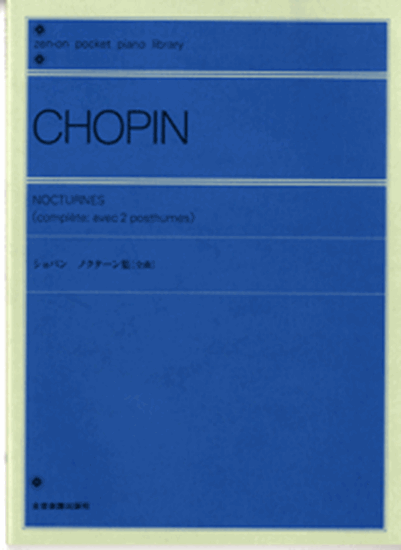Chopin, Frederic : Nocturne No.3 H-Dur Op.9-3
Work Overview
Genre:nocturne
Total Playing Time:6 min 30 sec
Copyright:Public Domain
Commentary (1)
Author : Hayashikawa, Takashi
Last Updated: January 15, 2019
[Open]
Author : Hayashikawa, Takashi
Nocturne Op.9 No.3
This is the only one of Chopin's Nocturnes to be marked with a fast tempo, Allegretto, and it also has the largest number of measures among his Nocturnes (158 measures). Its form, like many other Nocturnes, is a ternary form of A-B-A'-Coda, but A is further divided into a-a-b-b. The opening of 'a' is a light, skipping theme rather than a singing one, and the musical term 'Scherzando' (jokingly/playfully) is used. In measure 13 of 'a', where the music had been skipping, a song in F-sharp major, marked 'espressivo', suddenly enters, but it quickly returns to B major and settles. Once this theme is repeated again with increased ornamentation, it enters 'b' in F-sharp major (measures 41-64), where a consistently smooth song is sung. The last eight measures of this 'b' section directly use those from 'a'. 'b' is also repeated with increased ornamentation. The final ascending melodic figure appearing in measure 87 is marked 'pp', creating a dreamlike atmosphere, but its last note, instead of the previously major D-sharp (dis) (Example 1), is a minor D (d) with an accent mark (Example 2), and the music suddenly enters a passionate B minor middle section in 2/2 time, as if pushing the listener away.
Example 1 Measures 63-64
Example 2 Measures 87-88 End of A and beginning of B
Here, dynamic markings frequently change, creating a sense of aimless instability. Then, as emotions reach their peak and conclude on the double dominant of B minor, the last two measures of A reappear, as if returning to reality (Example 3).
Example 3 Measures 129-133 End of B and return of A
Here, the last note of the aforementioned ascending melodic figure is C-double-sharp (cisis), an enharmonic equivalent of D, but since the music is still in a minor key at that point, it gives the impression that a dark development will continue (Example 3, measure 3). However, using this C-double-sharp as a passing tone, the music returns to the bright main section, and the 'a' part is recapitulated. The ascending melodic figure motif shown in Example 1 and Example 2 is expanded into an 11-tuplet in measure 150, impulsively rushing up an octave (Example 4), and as the intensity increases, it enters a short coda.
Example 4 Measures 148-151
Then, it quickly settles on the dominant (V degree), and similar to No. 2, a right-hand cadenza appears, concluding with an Adagio in 4/4 time, completely different in character from what preceded it, featuring leisurely arpeggios played by both hands.
PTNA & Partner Channel Videos(5items)
Sheet Music
Scores List (12)

(株)全音楽譜出版社

ハンナ(ショパン)

(株)ドレミ楽譜出版社

(株)音楽之友社

(株)全音楽譜出版社

(株)音楽之友社

(株)全音楽譜出版社

(株)全音楽譜出版社

(株)全音楽譜出版社

ポーランド音楽出版社

(株)ヤマハミュージックエンタテインメントホールディングス

(株)音楽之友社






